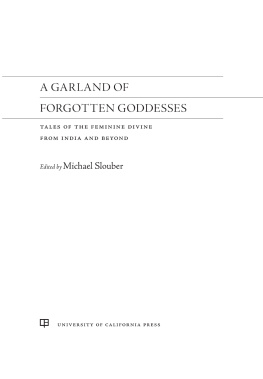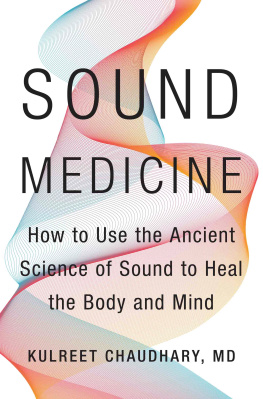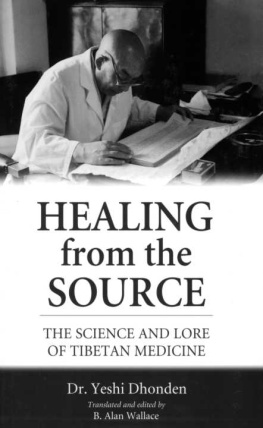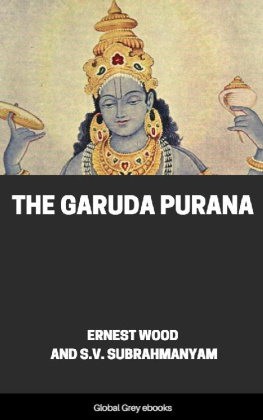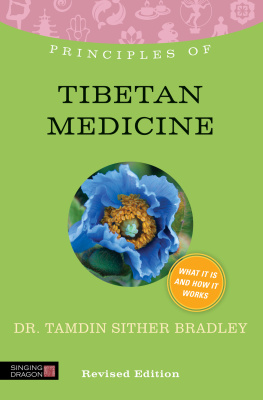Early Tantric Medicine

Oxford University Press is a department of the University of Oxford. It furthers the Universitys objective of excellence in research, scholarship, and education by publishing worldwide. Oxford is a registered trade mark of Oxford University Press in the UK and certain other countries.
Published in the United States of America by Oxford University Press
198 Madison Avenue, New York, NY 10016, United States of America.
Oxford University Press 2017
All rights reserved. No part of this publication may be reproduced, stored in a retrieval system, or transmitted, in any form or by any means, without the prior permission in writing of Oxford University Press, or as expressly permitted by law, by license, or under terms agreed with the appropriate reproduction rights organization. Inquiries concerning reproduction outside the scope of the above should be sent to the Rights Department, Oxford University Press, at the address above.
You must not circulate this work in any other form and you must impose this same condition on any acquirer.
Cataloging-in-Publication data is on file at the Library of Congress
ISBN 9780190461812
ePub ISBN-13: 9780190621124

Contents
MY WORK ON this book began in 2005 in a graduate seminar on reading Sanskrit manuscripts. Eager to test my new skills on fresh material, I had brought a list of potential manuscripts to Dr. Somadeva Vasudeva, then a visiting faculty member at UC Berkeley. Skimming the list, he noticed one titled Kriyklaguottara and told me with full confidence to order copies of all of its manuscripts. His former mentor at Oxford, Professor Alexis Sanderson, had positively identified it as the same text quoted by Kemarja in his eleventh-century AD commentary on the Netra Tantra. In other words, here was an early Hindu Tantra important enough to be read and cited by the learned disciple of famed Kashmirian polymath Abhinavagupta, and one that was yet unknown to modern scholarship. It took several years of diligent study for me to realize the true importance of this work to the history of Indian medicine and religion. Set in the voice of the Hindu god iva, the text preserves rich medical and religious material from two of the five classes of his Tantric revelation. Leading scholars had deemed these medical Tantras lost, but my work with the Kriyklaguottara led to the discovery of several other original texts surviving in fragile palmleaf manuscripts in Nepal.
Before proceeding further, some clarification of the word Tantra is necessary. Indeed, in the popular imagination as well as in the minds of many scholars, Tantra is a religious tradition associated with depraved sexual practices and intentionally transgressive ritual involving the most impure substances. This mistaken portrait of Tantra derives partly from modern Indian usage of the word as a pejorative referring to sorcery and secret rites. Many scholars would distinguish between gama, the respectable revelations of iva concerning normative temple worshipstill valued in South Indiaand the more or less transgressive Tantras concerned with wild female deities, and the powers that they grant to aspirants secretly worshipping in cremation grounds. Such a division did come about in the minds of Indian intellectuals in the later medieval period, but the early Tantras themselves use the terms Tantra and gama interchangeably to refer to a scripture revealed by a deity. The guiding strategy of this book project has been to understand these traditions as they saw themselves, and to resist reading later categories into earlier material.
I discovered that historians of Indian medicine have tended to overlook or misrepresent medico-religious literature, perhaps as a result of the modern tendency to see religion and medicine as two distinct spheres. The medicine of the early Tantras exerted wide influence on Indian medicine in general, and this book aims to correct the tendency to dismiss medical systems that are based in religion.
The project began as a doctoral thesis done under the supervision of Professors Robert Goldman and Alexander von Rospatt at the University of California, Berkeley. I owe a great debt to these scholars as well as to Sally J. Sutherland Goldman, all of whom had a profound impact on my early years of Sanskrit study. Many other teachers and colleagues have also guided me along the way, and this book would not have been possible without their support. With financial support from the German Academic Exchange Service (DAAD), I worked for two years with Professor Dr. Harunaga Isaacson of the Universitt Hamburg in Germany. He generously read the most important sources with me, and offered countless corrections to the texts and my translations. I am also grateful to Alexis Sanderson, who kindly guided me for three weeks in 2010, and whose comments and scholarship have had a major impact on this book. While studying Nepali on a FLAS fellowship in Kathmandu, I participated in the First International Workshop on Early Tantra and met many colleagues who remain valuable contacts to this day, including Diwakar Acharya, Dominic Goodall, Kenichi Kuranishi, Kengo Harimoto, Pter-Dniel Sznt, Gergely Hidas, Judit Trzsk, Shaman Hatley, Iain Sinclair, and S. A. S. Sarma. All of these astute scholars and unnamed others have contributed to this book in various ways: by sharing electronic texts, by feedback, and by their encouragement.
The book was initially typeset by the author using a number of free and open-source software tools based on the TEX typesetting system: the memoir class for layout and organization, XLATEX for fonts, LEDMAC for the edition, and BibTEX for bibliography management. Several key macros and much useful advice was provided by Somadeva Vasudeva and Dominik Wujastyk. Thanks to the Newgen production team for fine-tuning and finishing the production of this beautiful book.
The final revisions to the book were supported by family, friends, colleagues, and a few kind members of the general public via a Kickstarter crowdsourcing initiative. Backers included, in alphabetical order by surname: Jung Lan Bang, Jason Birch and Jacqueline Hargreaves, Michael Brackney, Evelyn Brooke, Dar and Jana Chehrazi, Chris Fluke, Saumya Garg, Shaman Hatley, Oliver Hellwig, Moira Hill, Ellen and Saul Lindenbaum, Jim Mallinson, Edward McCarron and the Lister Society, Mohanan CG Nair, Larissa Pickens, Garda and Glenn Robinson, Marlene Robinson and Robert Bloodgood, Kashi and Christian Royer, Florinda De Simini, Corinne Robinson Slouber, James and Katherine Slouber, John Slouber, Amy Zahn Stewart, Sthaneshwar Timalsina, Somdev Vasudeva, Dominik Wujastyk, and Chieko Yamano.
I am grateful to Cynthia Read and Oxford University Press for publishing and promoting this book. The two anonymous reviewers that they selected offered excellent critical feedback that helped to improve the book in countless ways. The excellent index to the book was prepared by L.S. Summer. My gratitude is also due to Owen Duffy for permission to use his photograph on the cover of this book.
I would especially like to acknowledge the enduring support of my wife, Corinne, who has seen me through the project from start to finish. She helped with everything from proofreading to translating secondary sources, and has been the prime motivator for my finishing it in a timely manner.


